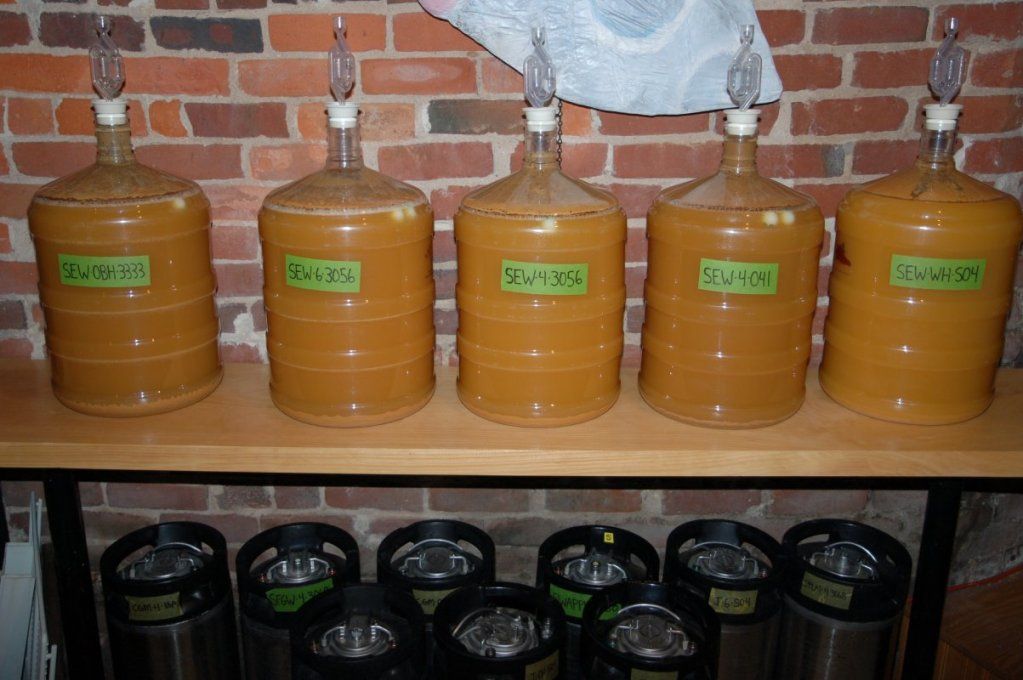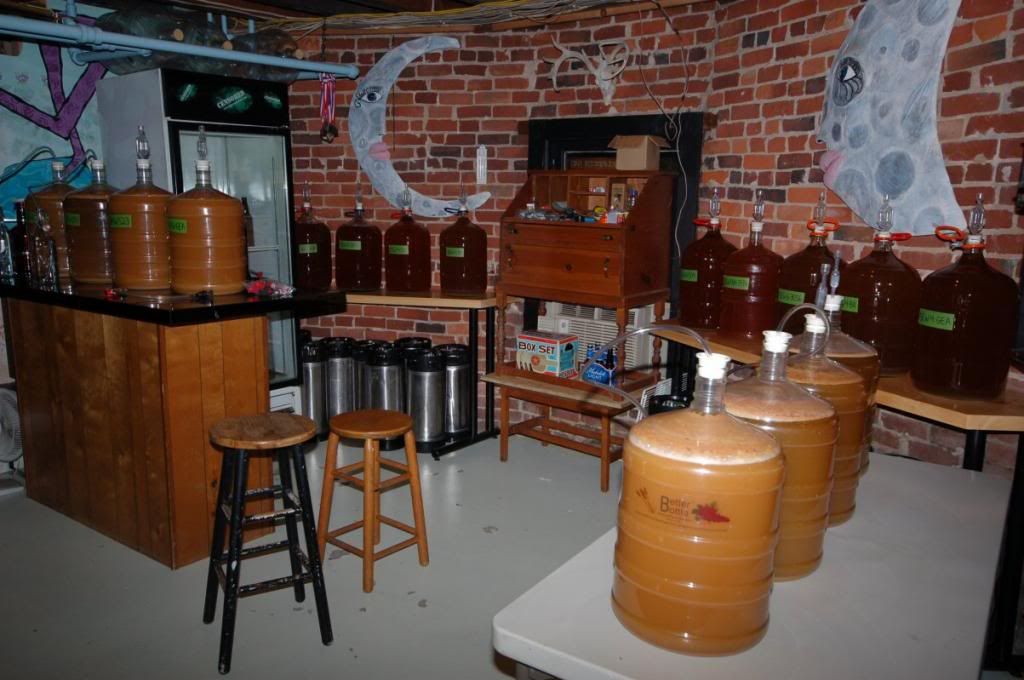My keg batch process has been evolving since I started reading this forum last year. Before then I just used fresh local UV pasteurized juice and Nottingham ale yeast. No extra sugar, but sometimes 3lbs of honey for cysers. Cold crash when it gets to about 1.002 to 1.008, keep an eye on it for a couple days to make sure fermentation doesnt start back up again and then put it in a keg and carb at 25psi and a day or two later it is good to go. A few extra days of settling and carb generally improves the taste, but it doesnt need much aging. Sometimes a pasteurized cider will clear up after an extra week or two in the secondary, but usually not. Cysers usually do.
Since reading this forum last year Ive started adding sugar to most batches, to pick the sg up to 1.060 or 1.065 max. Ive found that starting with slightly higher sg gives more control over stopping at a good final sg and still leaves a lot of apple taste. I shifted to using mostly unpasteurized juice because it clears faster with no additives, so can be kegged sooner as long as you dont mind waiting longer to drink it.
For the most recent 5 keg batches I cut the k-meta dosage in half (1/8 tsp in 6gal). I expect this will make them drinkable sooner. For four of the carboys I added 18 oz turbinado and 9oz corn sugar to bring the sg to 1.060. For the fifth, I added 3lbs of orange blossum honey to take the sg to 1.065.
I usually use dry ale yeast, mostly Nottingham and S04. This year I also did a few with US05 and S23 and in the keg batches I justed started, Im using two liquid yeasts Wyeast 3068 and 4184, along with Nottingham and S04. Im also using S04 for the Cyser. S04 seems to do the best for unpasteurized cysers. The 3068 is producing a lot of foam and Ive had to clean up that carboy a couple of times. For the dry yeasts I dont use a starter just pitch the yeast right on the surface of the ¼ the packet of yeast at a time, floating it on the surface until it sinks. After all 4 pitches of yeast have rehydrated and sunk, shake the carboy to make sure none of the sugar or honey is settling on the bottom.
Fermentation usually starts in less than 12 hours, airlock bubbles after 24 hours and strong fermentation for 6 to 8 days. When the fermentation starts slowing down a week or so later, check the sg and taste periodically to determine when to stop fermentation. I usually cold crash when the sg is between 1.004 and 1.010, depending on overall taste. Rack the carboy into a spare, put it in the fridge at 35 degrees for a day to settle and rack it again back to the original and let it settle.
For pasteurized juice, its pretty much good to go at this point if you dont mind drinking it a little cloudy. For unpasteurized juice, I let it sit for a few more weeks to clear out a little more, usually until six weeks after I got the juice, because by then I need the carboy to get new juice. I generally let unpasteurized juice sit in the keg for at least a month and sometimes much longer for the tartness to mellow out, however Im pretty sure that will be changing now that Im cutting back on the k-meta at the beginning.
Im hoping to find a good balance of k-meta and sorbate that can stop the fermentation without cold crashing and not effect the taste. That will allow a single racking between primary and secondary, which will save a step. Id also like to get rid of adding k-meta before fermentation if it doesnt adversely affect how long it keeps. That would save time as well. Right now I figure it takes me about 15 hours total to make 5 kegs from picking up the juice at the press to putting it in kegs. Most of the time is cleaning and sanitizing the vessels each time I rack. Id like to get it down to 10 hours for total processing time on 5 kegs and put away 25 - 30 kegs a season, which ought to last until next season.
My best recipe so far depends on who you ask. I personally prefer something in the 1.004 to 1.006 range with a body that is more like an ale than a wine, with a semi-tart apple finish and not a lot of non-fruit flavors. Most of my friends tastes range from something more like a dry white wine at 1.000 to something that tastes more like a Woodchuck at 1.010. Ive found that when serving cider its nice to have at least two kegs, one on the sweet side and the other on the dry side. Cysers are popular, and usually get finished first at a party, although Im not crazy about them myself. Last year I did a couple of kegs where I added raspberries to the secondary, which came out really good.
Other than that, its all about matching the juice with the yeast, which is a constantly changing thing because the juice changes throughout the season. Everything made with the above yeasts has come out good. The first seven keg batches this season were with Jonathan juice which is good and tart, and so far the S04 and Nottingham taste the best of those. The five batches in secondary were made with Stayman, Granny smith and Golden delicious, and the US05 and S04 cyser are the most promising so far. Too early to tell with the most recent batch which is Staymans and Winesaps. There are a couple of local orchards that sell vintage apples that are supposed to be really good for cider Albemarle pippens, Northern Spys and Russetts. Ive thought about buying some and doing a custom pressing, but that would be really expensive, so for now Im using whatever is readily available at the commercial juice presses.
My favorite batches from last year came from 12 gallons of unpasteurized juice that was a mix of half Granny smith and half Yorks. It had an sg of 1.060, and was insanely tart because of all the Granny smith, so I split it up into 5 kegs with slightly different amounts of juice and filled the rest with pasteurized juice that was mostly Staymans, then added 12oz turbinado and 6 oz corn sugar and Nottingham yeast for all five batches. They were all slightly different and all really good.




